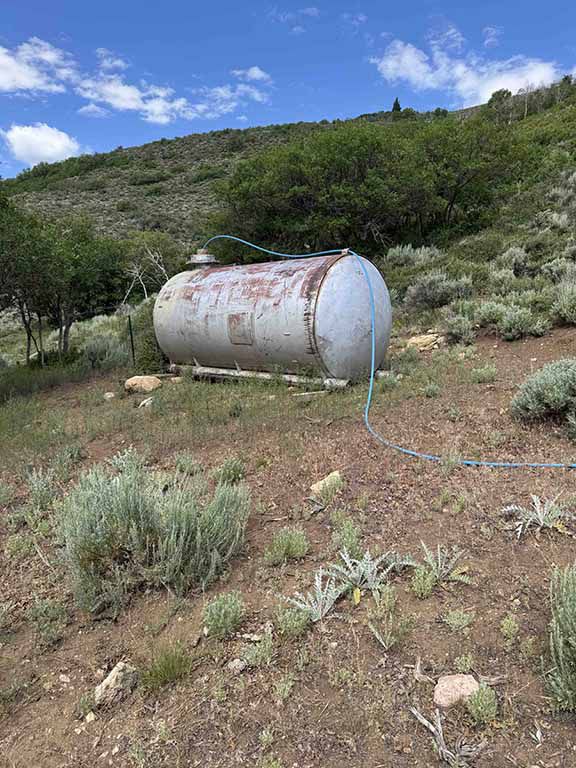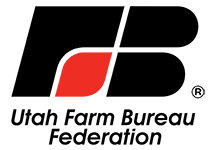Farmers and Ranchers Helping Mother Nature by Reusing Industrial Materials
Author
Published
9/25/2025
The Uinta Basin in eastern Utah is a hot spot for oil drilling activity. Oil wells dot the landscape, even overlooking residential houses. Locals accept their presence as part of daily life, as much of the local economy revolves around the oil industry.
Agriculture is also a large part of life and culture in the Uinta Basin, producing mostly alfalfa hay, beef cattle, dairy, and other small grains, but farming in that area is not easy. Farmers contend with poor, rocky soil, drought, regulatory restrictions, and pressures from oil companies themselves. However, with determination and ingenuity, they find inventive ways to use the resources they do have available to their advantage.
One of the ways they do this is by reusing and recycling industrial waste from oil well sites.
A Better Corral
It is no surprise that industry produces waste at several steps of the production cycle. One example of this is with the drilling pipe itself. When an oil company drills into the earth and starts extracting oil, it uses a large pipe with a metal tube inside. Inside the metal tube is another metal rod called a sucker rod that moves up and down. Every couple of years, the metal tube and sucker rod can become damaged or worn out in places. Since they have to remove the entire length to get to the damaged section, they usually replace the entire length of the tubing at once instead of just replacing the damaged section. This leaves miles of metal tubes and rods that are not in good enough condition to be used for oil drilling but are still good enough for other purposes. They then offer it to salvage companies to collect. For this article, I will refer to the metal tubing as “drill pipe.”
.jpeg)
.jpeg)
Brandon Bench, owner of one such salvage company in Duchesne County, reclaims the pipe and other products from the wells.
“Most oil companies will put the products out on bids for salvage or fencing companies, and it’s a competitive market,” Bench said. “If I win the bid, then I will go collect it from the oil well site.”
Bench then sells the piping to anyone who would like to buy it, but mostly to farmers.
“They can make all sorts of things out of it, but they usually cut it down to size and use it for fences and corrals.” Bench said.
Using drill pipe as fence posts and side slats has many advantages.
“It lasts much longer, is stronger, and cheaper than wood,” Bench said. “It can also be welded, which opens up more configuration options than other materials.”
From Oil Tanks to Feeding Animals
Another way farmers use waste from oil sites is the oil tanks themselves. When an oil company abandons a site or if a tank becomes too old, they offer it for salvage as well.
Farmers and ranchers use these large tanks for grain silos and watering containers.
Many ranchers in the area graze their beef cattle on public land during the summer, in often very remote areas. Even though the cattle can graze on wild grasses, it is a challenge to give them access to water. Usually, there are natural springs that provide water, but they often dry up long before the feed is gone. Ranchers can channel the spring water into large holding tanks and then use it from the tank through a trough.
“Since the tank fills up and acts as storage, they can continue to water the cows long after the spring has dried up,” Bench said. “They can extend their grazing season by 2 to 3 more weeks.”
Ken Moon, owner of Moon Land and Livestock, utilizes oil tanks for this purpose. He also uses other materials.
“We got a water treatment container from the oil field, which is a square tank,” Moon said. “We cut it in half and put skids underneath both halves, and now we can move them around to wherever we need them for watering troughs.”
Moon also utilized drill pipe to build a portable corral.
“We built free-standing panels out of drill pipe that can be attached to create a corral, alley, and bud box for up to 120 cows,” Moon said. “We can haul it anywhere we need on a trailer and set it up with a skid steer. Our old panels were much lighter and could be pushed and bent by the cows, but these are much more heavy-duty and will last longer than traditional materials.”
Having a portable corral means Moon and his family can collect their cows from open grazing land when it’s time to transport them somewhere else.
“We use industrial waste materials because they’re really heavy duty, readily available, and cheaper than many new, traditional materials,” Moon said. “Sometimes I’ll go to the salvage yard and just look around to see what they have and think about how I could use it.” 
There are many other industrial waste products that farmers reuse. Old oil site sheds can be turned into chicken coops or goat shelters, rubber tubing can be used as gas or water lines, and reclaimed catwalks can be used as ladders over fences or bridges over canals.
The options are as limitless as a farmer’s ingenuity.
“I look for examples of what other people have done,” Moon said. “I’ve gotten a lot of ideas from my neighbors as well.”
In a place where farming can be a challenging endeavor, the saying that “necessity is the mother of invention” is truer than ever. Farmers and ranchers continue to prove their inventive and innovative spirits and demonstrate how waste materials can be reused and recycled. All you need is a little imagination and elbow grease.
Want more news on this topic? Farm Bureau members may subscribe for a free email news service, featuring the farm and rural topics that interest them most!
